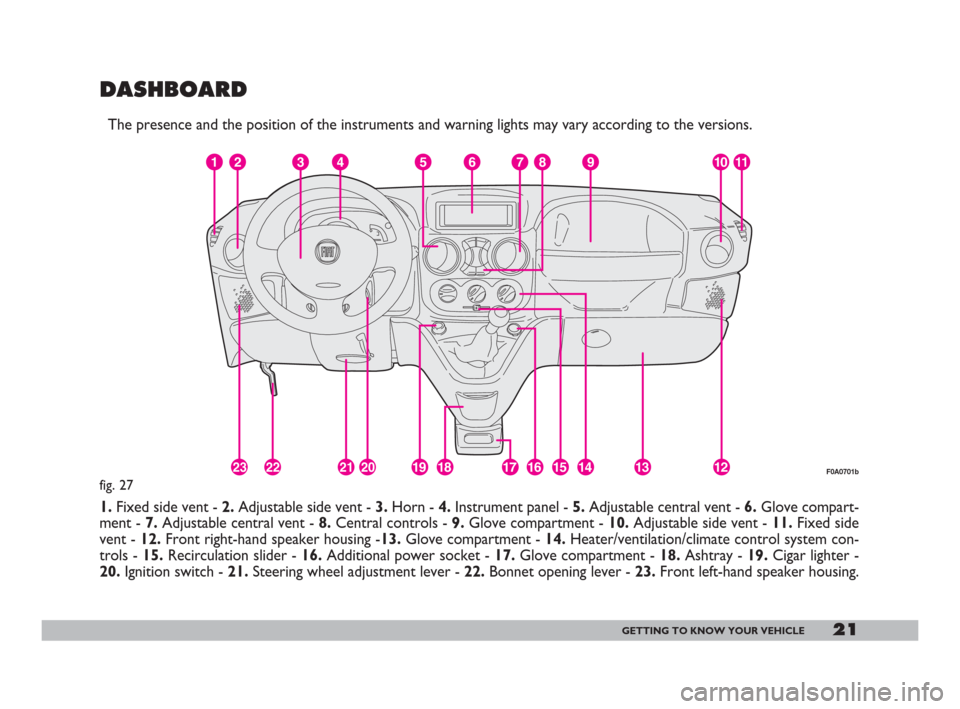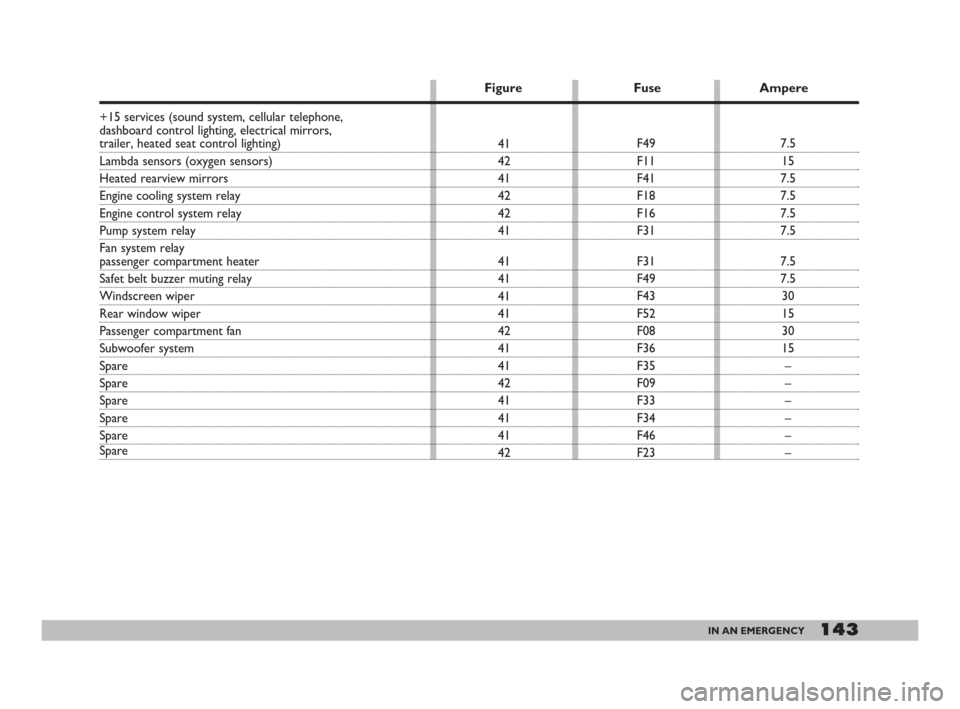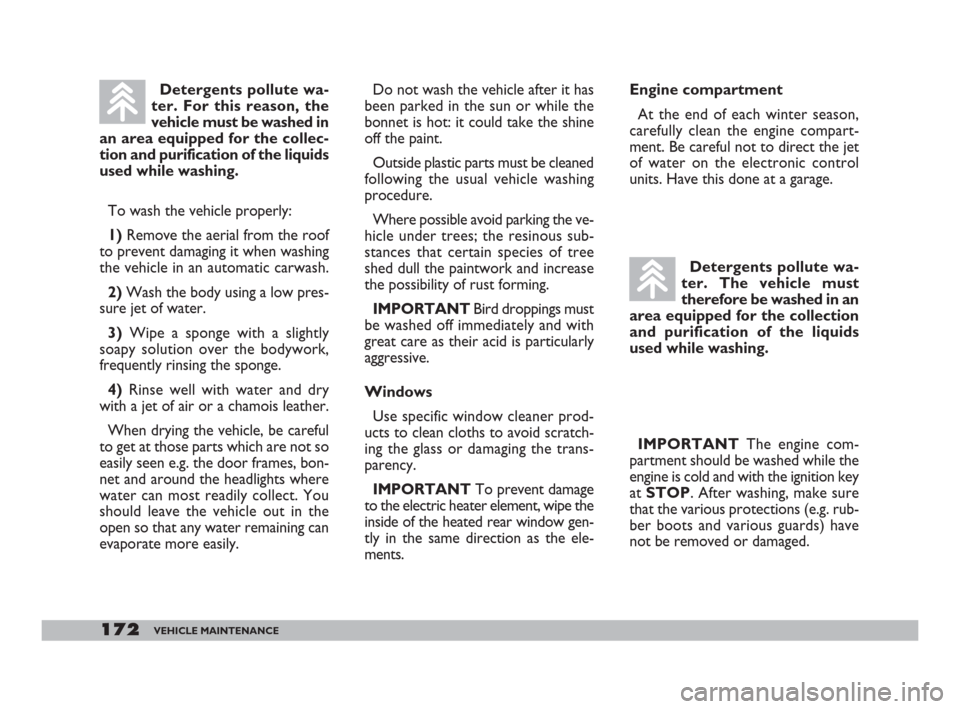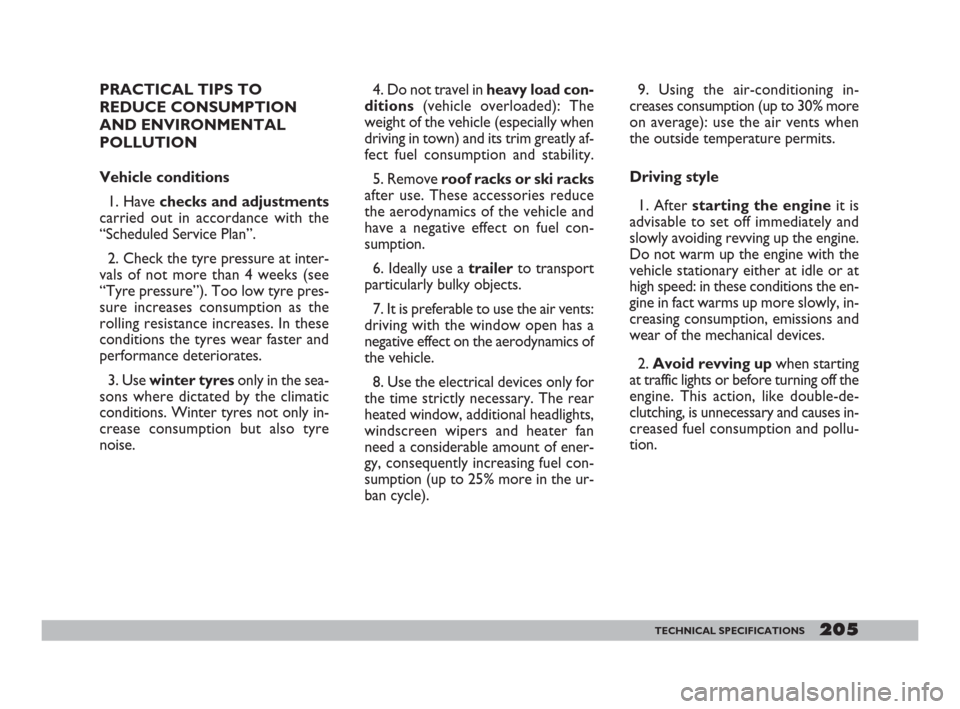heater FIAT DOBLO 2008 1.G Owners Manual
[x] Cancel search | Manufacturer: FIAT, Model Year: 2008, Model line: DOBLO, Model: FIAT DOBLO 2008 1.GPages: 222, PDF Size: 3.39 MB
Page 22 of 222

21GETTING TO KNOW YOUR VEHICLE
DASHBOARD
The presence and the position of the instruments and warning lights may vary according to the versions.
1.Fixed side vent - 2.Adjustable side vent - 3.Horn - 4.Instrument panel - 5.Adjustable central vent - 6.Glove compart-
ment - 7.Adjustable central vent - 8.Central controls - 9.Glove compartment - 10.Adjustable side vent - 11.Fixed side
vent - 12.Front right-hand speaker housing -13.Glove compartment - 14.Heater/ventilation/climate control system con-
trols - 15.Recirculation slider - 16.Additional power socket - 17.Glove compartment - 18.Ashtray - 19.Cigar lighter -
20.Ignition switch - 21.Steering wheel adjustment lever - 22.Bonnet opening lever - 23.Front left-hand speaker housing.
143567891011
121314161517191820212223
2
fig. 27
F0A0701b
001-105 Doblo GB 16-12-2008 14:22 Pagina 21
Page 111 of 222

110DRIVING YOUR VEHICLE
Some suggestions which may help
you to keep the running costs of the
vehicle down and lower the amount
of toxic emissions released into the at-
mosphere are given below.
GENERAL
CONSIDERATIONS
Vehicle maintenance
The overall state of the vehicle is an
important factor which has a marked
influence over fuel consumption and
driving comfort and on the life span of
your vehicle. For this reason care
should be taken to maintain your ve-
hicle by carrying out the necessary
checks and regulations in accordance
with the specifications given in the
SERVICE SCHEDULE (see sections:
spark plugs, idling, air cleaners, diesel
fuel filter, timing).Tyres
Tyre pressure should be checked at
least once every four weeks: if the
pressure is too low fuel consumption
increases as the resistance to the
rolling movement of the tyre is
greater. In this state, tyre wear is in-
creased and handling suffers which will
effect safety.
Unnecessary loads
Do not travel with too much load in
the boot. The weight of the vehicle
and its trim greatly effects consump-
tion and stability.
Roof rack/ski rack
Remove the roof rack or the ski rack
from the roof as soon as they are no
longer used.
These accessories reduce the aero-
dynamic penetration of the vehicle and
will increase consumption. Whentransporting particularly large objects,
use a trailer, where possible.
Electric devices
Use electric devices for the neces-
sary time only. The heated rear win-
dow, fog lights, windscreen wipers,
heater fan require large amounts of
electricity and increasing the request
for power will also increase fuel con-
sumption (up to +25% when driving in
towns).
Climate control system
The climate control system is an ad-
ditional load which greatly effects the
engine leading to higher consumption
(up to +20% in average). When the
temperature outside allows, use the
air vents where possible.
Aerodynamic accessories
The use of non-certified aerodynamic
items may adversely affect air drag and
consumption levels.
CONTAINING RUNNING COSTS AND POLLUTION
106-118 Doblo GB 9-05-2008 12:09 Pagina 110
Page 144 of 222

143IN AN EMERGENCY
+15 services (sound system, cellular telephone,
dashboard control lighting, electrical mirrors,
trailer, heated seat control lighting)
Lambda sensors (oxygen sensors)
Heated rearview mirrors
Engine cooling system relay
Engine control system relay
Pump system relay
Fan system relay
passenger compartment heater
Safet belt buzzer muting relay
Windscreen wiper
Rear window wiper
Passenger compartment fan
Subwoofer system
Spare
Spare
Spare
Spare
Spare
Spare
Figure Fuse Ampere
7.5
15
7.5
7.5
7.5
7.5
7.5
7.5
30
15
30
15
–
–
–
–
–
– F49
F11
F41
F18
F16
F31
F31
F49
F43
F52
F08
F36
F35
F09
F33
F34
F46
F23 41
42
41
42
42
41
41
41
41
41
42
41
41
42
41
41
41
42
119-148 Doblo GB 9-05-2008 12:09 Pagina 143
Page 173 of 222

172VEHICLE MAINTENANCE
Detergents pollute wa-
ter. The vehicle must
therefore be washed in an
area equipped for the collection
and purification of the liquids
used while washing.
IMPORTANT The engine com-
partment should be washed while the
engine is cold and with the ignition key
at STOP. After washing, make sure
that the various protections (e.g. rub-
ber boots and various guards) have
not be removed or damaged. To wash the vehicle properly:
1) Remove the aerial from the roof
to prevent damaging it when washing
the vehicle in an automatic carwash.
2) Wash the body using a low pres-
sure jet of water.
3)Wipe a sponge with a slightly
soapy solution over the bodywork,
frequently rinsing the sponge.
4)Rinse well with water and dry
with a jet of air or a chamois leather.
When drying the vehicle, be careful
to get at those parts which are not so
easily seen e.g. the door frames, bon-
net and around the headlights where
water can most readily collect. You
should leave the vehicle out in the
open so that any water remaining can
evaporate more easily.Detergents pollute wa-
ter. For this reason, the
vehicle must be washed in
an area equipped for the collec-
tion and purification of the liquids
used while washing.
Engine compartment
At the end of each winter season,
carefully clean the engine compart-
ment. Be careful not to direct the jet
of water on the electronic control
units. Have this done at a garage. Do not wash the vehicle after it has
been parked in the sun or while the
bonnet is hot: it could take the shine
off the paint.
Outside plastic parts must be cleaned
following the usual vehicle washing
procedure.
Where possible avoid parking the ve-
hicle under trees; the resinous sub-
stances that certain species of tree
shed dull the paintwork and increase
the possibility of rust forming.
IMPORTANTBird droppings must
be washed off immediately and with
great care as their acid is particularly
aggressive.
Windows
Use specific window cleaner prod-
ucts to clean cloths to avoid scratch-
ing the glass or damaging the trans-
parency.
IMPORTANTTo prevent damage
to the electric heater element, wipe the
inside of the heated rear window gen-
tly in the same direction as the ele-
ments.
149-173 Doblo GB 9-05-2008 12:10 Pagina 172
Page 206 of 222

205TECHNICAL SPECIFICATIONS205
PRACTICAL TIPS TO
REDUCE CONSUMPTION
AND ENVIRONMENTAL
POLLUTION
Vehicle conditions
1. Have checks and adjustments
carried out in accordance with the
“Scheduled Service Plan”.
2. Check the tyre pressure at inter-
vals of not more than 4 weeks (see
“Tyre pressure”). Too low tyre pres-
sure increases consumption as the
rolling resistance increases. In these
conditions the tyres wear faster and
performance deteriorates.
3. Use winter tyresonly in the sea-
sons where dictated by the climatic
conditions. Winter tyres not only in-
crease consumption but also tyre
noise.4. Do not travel in heavy load con-
ditions(vehicle overloaded): The
weight of the vehicle (especially when
driving in town) and its trim greatly af-
fect fuel consumption and stability.
5. Remove roof racks or ski racks
after use. These accessories reduce
the aerodynamics of the vehicle and
have a negative effect on fuel con-
sumption.
6. Ideally use a trailerto transport
particularly bulky objects.
7. It is preferable to use the air vents:
driving with the window open has a
negative effect on the aerodynamics of
the vehicle.
8. Use the electrical devices only for
the time strictly necessary. The rear
heated window, additional headlights,
windscreen wipers and heater fan
need a considerable amount of ener-
gy, consequently increasing fuel con-
sumption (up to 25% more in the ur-
ban cycle).9. Using the air-conditioning in-
creases consumption (up to 30% more
on average): use the air vents when
the outside temperature permits.
Driving style
1. After starting the engineit is
advisable to set off immediately and
slowly avoiding revving up the engine.
Do not warm up the engine with the
vehicle stationary either at idle or at
high speed: in these conditions the en-
gine in fact warms up more slowly, in-
creasing consumption, emissions and
wear of the mechanical devices.
2. Avoid revving upwhen starting
at traffic lights or before turning off the
engine. This action, like double-de-
clutching, is unnecessary and causes in-
creased fuel consumption and pollu-
tion.
174-211 Doblo GB 16-12-2008 14:26 Pagina 205